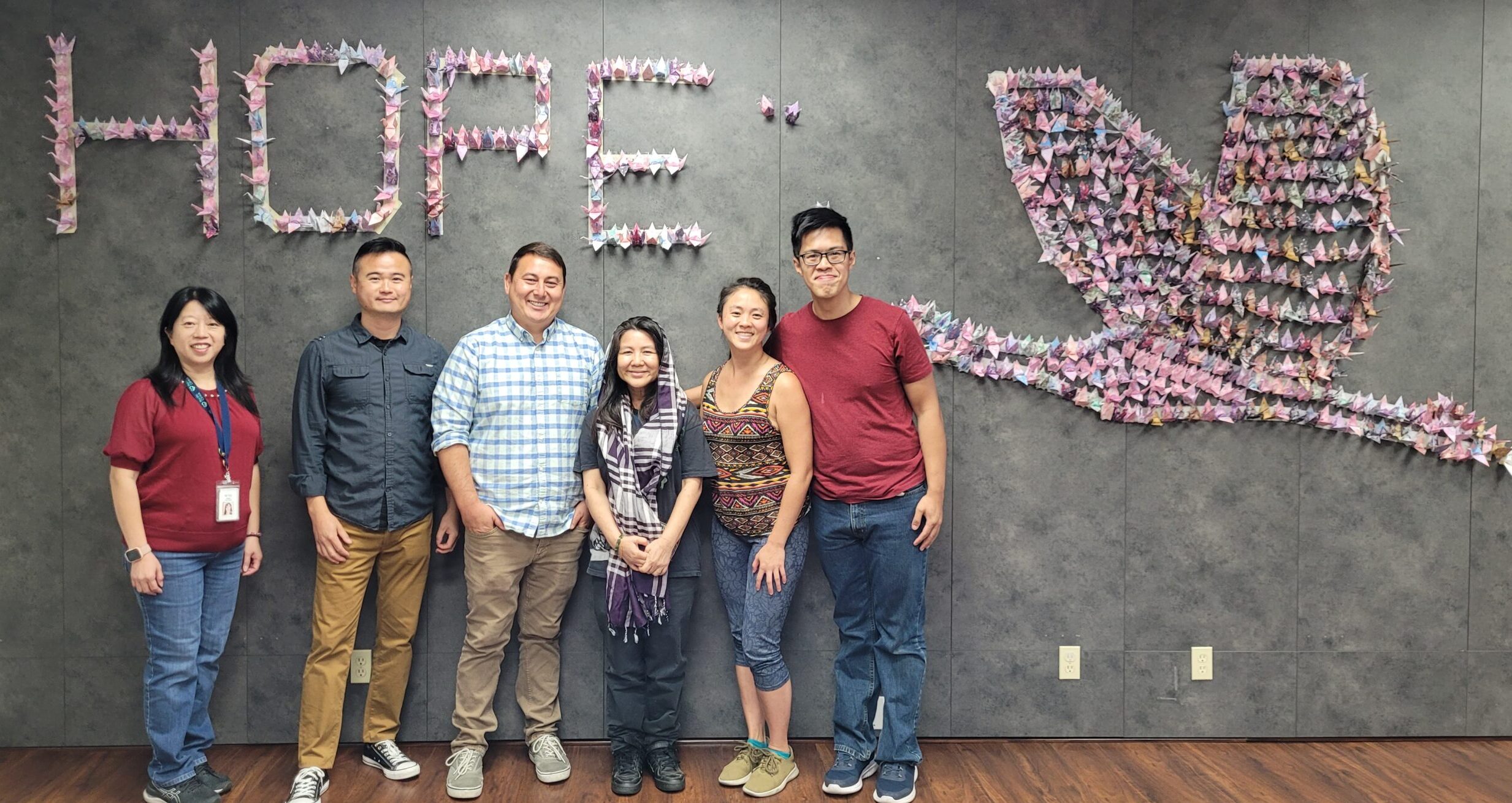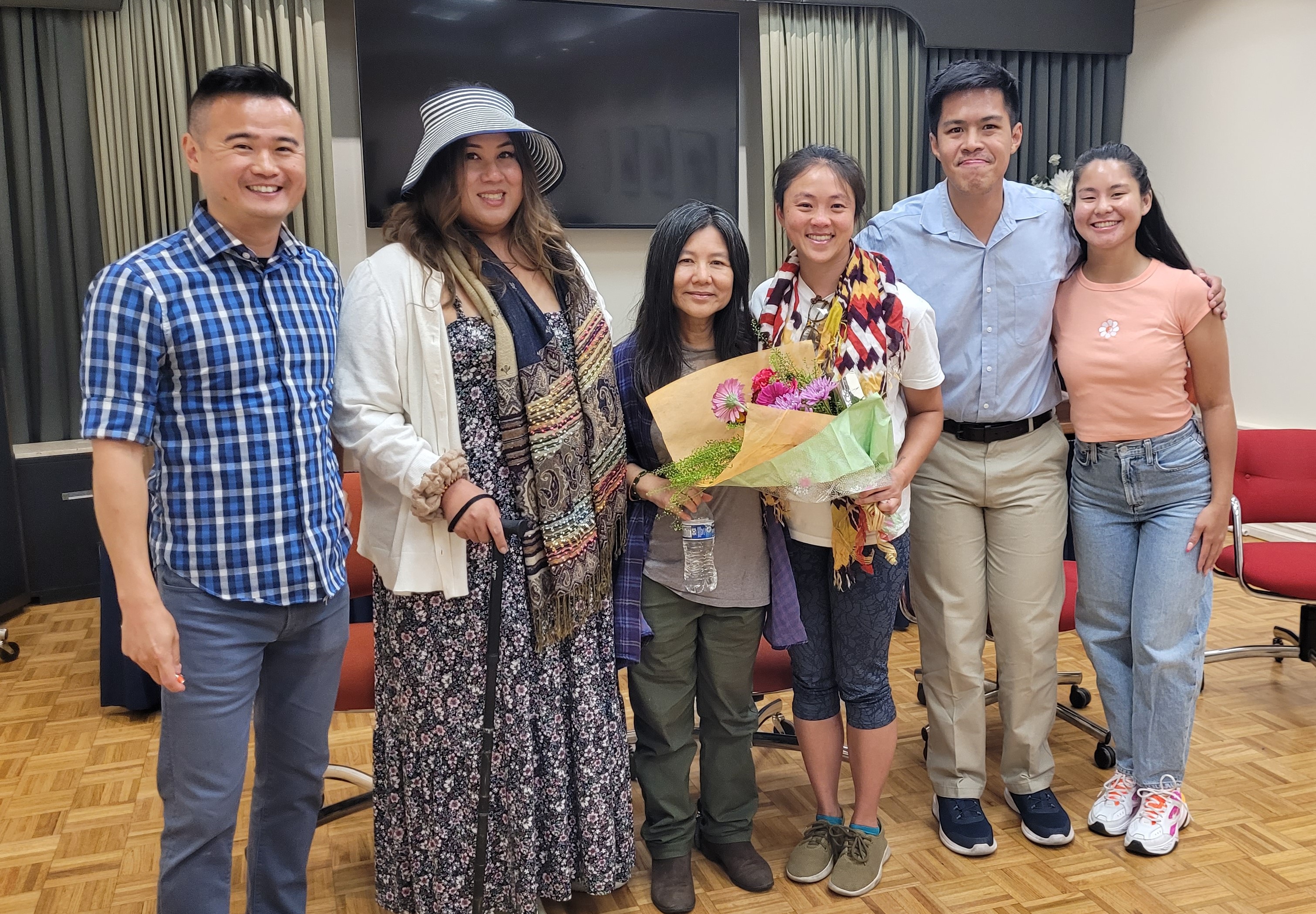
STORYTELLING THEATER FOR HEALING
In August, we delivered seven Storytelling Theater’s Red Doors performances/workshops.
Since early this year, I have been mentioning Storytelling Theater and Red Doors. Some of you/my readers might still be wondering what exactly it is.
Last fall, I received a contract from the Los Angeles County Department of Mental Health to use live theater performances as a tool to increase mental health awareness and decrease stigma within Asian American communities. I refer to these events as performances/workshops because, instead of attending a traditional mental health workshop with PowerPoint presentations, the audience immerses themselves in a powerful story. We all know the impact of hearing an inspirational and personal story — now, imagine that story unfolding right in front of you as a theatrical play.
The model I am using is based on Augusto Boal’s Theatre of the Oppressed and interactive theater. Traditionally, people go to the theater to watch a play. Our approach is to bring the theater to the people by conducting performances in classrooms, community centers, and conference rooms. A key component of interactive theater is the emphasis on audience participation.
In a traditional theater setting, people typically sit back and watch the performance. Even if the performance is educational and promotes social change, it often remains entertainment in the minds of the spectators. For instance, I have watched many powerful and inspiring documentary films on various streaming platforms. Yet, afterward, I rarely make changes in my life. Why? Because watching those documentaries, I have been sitting on my couch experiencing the film as entertainment, without the intentionality of active learning. In contrast, when people attend Storytelling Theater, they actively participate and engage with the live performance and its characters through different interactive exercises. This focused engagement and participation creates a deliberate and purposeful learning experience.
The specific play we have is called Red Doors. The color red is very auspicious in many Asian cultures. However, behind every beautiful red door lies untold stories. Unfortunately, due to stigma and historical trauma, many Asian and Asian American families don’t talk about their mental health experiences, leading many to suffer in silence and isolation for decades, myself included. Red Doors directly addresses the mental health impact of intergenerational conflict. The term “intergenerational” is used because, in addition to the generational gap, Asian American communities and families often face the added challenge of a cultural gap. In Red Doors, the audience sees a family struggling to balance parenting, communication breakdowns, the pressure of survival, maintaining family honor, adhering to traditional cultural practices, and addressing a child’s emotional needs amidst school bullying. The play includes scenes of physical abuse, bullying, overdose, and suicide.

After the live performance of Red Doors, there are various interactive activities where the audience is encouraged to share their thoughts and reactions to the play and interact directly with the characters. In many Asian cultures, people are not accustomed to speaking up or voicing their opinions openly, especially about their mental health struggles. While there is nothing inherently wrong with choosing not to speak up publicly, it’s important to recognize that Asian cultures have many beautiful practices, though they aren’t perfect. There is always room for improvement and growth, such as how we can normalize conversations about mental health so that people don’t have to suffer in silence.
By combining the powerful play Red Doors with interactive exercises, I’ve witnessed a remarkable phenomenon where individuals who traditionally wouldn’t ever talk about mental health privately begin sharing their thoughts and experiences openly. For example, one of our performances/workshops took place at a mental health clinic that supports Asian families and immigrants. A third of the participants were newly arrived immigrants still in ESL classes, another third had been in the States for about five to ten years with decent English skills, and the rest were fluent in English. I had an interpreter translating from English to Mandarin Chinese. After the Red Doors play, to my surprise, several participants from the ESL and intermediate English groups openly shared their thoughts and experiences. It was both eye-opening and heartwarming to see their courage in stepping outside their comfort zones. I often ask the audience what it is like to either openly talk about their mental health experiences, or just share them with the person sitting next to them. Many people respond with statements like, “It was a relief,” or “It was scary at first, but it felt good afterward.”
Another added benefit of interactive theater is that it models an example of how it’s okay to talk about mental health openly without the fear of backlash. For those who may be resisting or hesitant to discuss their mental health struggles due to stigma and shame, we hope that by witnessing others who look and speak like them willingly share their mental health experiences publicly, they will be inspired to talk about their own mental health in the future.
Unlike traditional mental health workshops, which often provide the audience with a lot of mental health data and tools (valuable as they may be), one of the goals of Storytelling Theater performances/workshops is to avoid telling the audience what to do about their mental health. Instead, by immersing themselves in the live performance and actively engaging in the interactive exercises, participants develop a sense of curiosity. After leaving the Red Doors performance/workshop and returning to their daily lives, they might continue reflecting on their experience and become curious about what they can do differently. Through this curiosity, we hope they will share their thoughts with friends and family members. This is how we can begin to normalize mental health conversations in our daily lives.
If you are interested in learning more about Storytelling Theater or in supporting the project, please let me know! One way to help is by spreading the word. If you believe Storytelling Theater could be beneficial to your organization, I’d love to hear from you.

____________________________________________________________________________________________________________________________
All Storytelling Theater workshops and performances were made possible through partnerships with various community-based organizations. The locations, dates, and partnering organizations are as follows (organized by date).
- API Recovery Talk (Virtual) on July 31
- Asian Youth Center on August 15
- Taiwan Center on August 17
- Visual Communications on August 17
- Asian Pacific Family Center on August 20
- Langley Center on August 21
- Gardena Buddhist Church on August 24
- Center for the Pacific Asian Family (Virtual) on September 5
- Cal State Long Beach on September 26
- JACL at the Japanese American National Museum on September 28
- Cambodia Town at Greater Long Beach YMCA on September 28
- The Asian American Drug Abuse Program on October 24
- UCLA on October 26
Special thanks to Asian Pacific Counseling and Treatment Centers and Pacific Asian Counseling Services.
Storytelling Theater Team members included:
- JR Kuo – Program Lead, Theater Director, and Workshop/Performance Facilitator. Founder of CoffeeWithJR, Mental Health Specialist and Speaker.
- Megha Nabe – Playwright and Actor
- Natalie Lortz – Project Coordinator and Actor
- Andrew Nishimoto – Actor
- Anya Custodio – Actor
- Bryan Ha – Actor
- Helen Gu – Actor
- Julie Khamvongsa – Actor
- Kimberly Lin – Actor
________________________________________________________________________________________________________________________________
Top Photo (right to left): Shyan-Pay Chao (Our host at the Pacific Clinics Multicultural Family Center), JR Kuo, Andrew Nishimoto (ST actor), Julie Khamvongsa (ST actor), Kimberly Lin (ST actor), and Bryan Ha (ST actor).
The Middle Photo is taken during the actual performance of Red Doors (right to left): Bryan Ha, Kimberly Lin, Anya Custodio, and Julie Khamvongsa.
Bottom Photo (right to left): JR Kuo, Anya Custodio, Julie Khamvongsa, Kimberly Lin, Bryan Ha, and Natalie Lortz (ST Coordinator).

Recent Comments